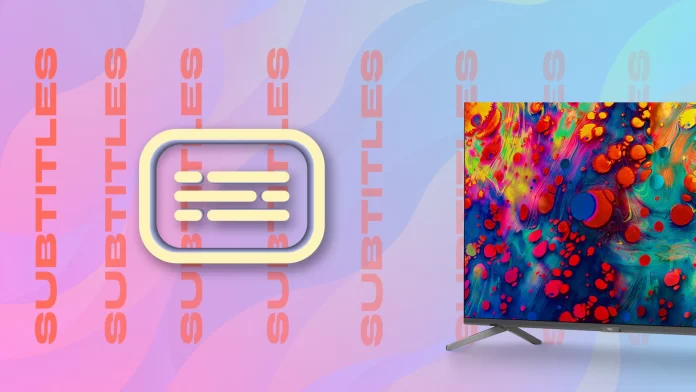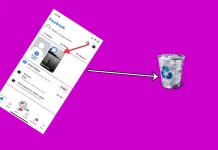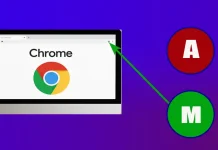Obviously, all users would like all functions of their TVs to work trouble-free, including subtitles. But if it were that perfect, life wouldn’t be so interesting, would it? Fortunately, every problem may have a solution. And subtitles on TCL TV are no exception.
According to user reviews, the most common subtitles bug on TCL TV is when they won’t turn on or won’t turn off. And this applies to both models with Roku OS and with Google TV. But the solutions are almost the same in both cases.
First, you should try turning the subtitles on/off again. Use the settings to find the Captions function. If the problem persists, restart your TCL TV and update the firmware. You may also need to perform a factory reset as a last resort.
Well, let’s see all the solutions in more detail.
How to fix subtitles on TCL TV with Roku OS
Below I describe the methods for fixing subtitles on Roku OS.
Method 1: Ensure subtitles are turned on/off
As mentioned above, the first step is to check whether you can turn subtitles on/off. Here’s how:
- Press the Home button on your remote control and go to Settings.
- Then, navigate to Accessibility and select Captions mode. (If you don’t see Accessibility, just select Captions.)
- After that, select On always to enable subtitles or Off to disable them.
- Also, check the Сaptions style settings. Check Text Size, Text Color, and other settings, changing them as needed. I recommend setting everything to default there.
Now, restart your TV and check if the problem remains.
Method 2: Turn on/off subtitles in streaming apps
Sometimes, subtitles are automatically enabled on apps like Netflix, YouTube, or Hulu. In that case, you need to turn them off right there. For example, Netflix and YouTube have their subtitle settings right in the playback menu. So, just click on the CC or Subtitles icon and turn them off (same thing to turn on).
In fact, the same applies to streaming apps on mobile devices (when you cast something on your TV using AirPlay or Chromecast). In other words, control the subtitles on/off settings via your smartphone. Roughly speaking, even if you turn off subtitles on your TV, they can still be displayed because they are enabled in the app.
Method 3: System restart
Simply turning it off with a button on the remote may not be enough. The fact is that most new TVs do not turn off entirely but go into standby/sleep mode. For this reason, the Roku OS has a special system restart option. And here’s how it works:
- From the Home screen, open Settings.
- Then navigate to System and select System restart.
- Finally, click Restart.
Wait a few minutes for Roku to reboot and check whether the subtitles work correctly now.
Method 4: Check for Roku OS updates
As you know, the update fixes many bugs, so it’s worth checking it out. Here’s how:
- From the Home screen, open Settings.
- Go to System and select System update.
- Click Check now.
If an update is available, install it and check that the subtitles work. Generally, Roku automatically checks for updates, but it’s better to do it manually sometimes.
Method 5: Factory reset
This is a last resort. So before resetting your TCL Roku TV, there’s something you need to know:
- Personal preferences will be deleted.
- Your TCL Roku TV will be unlinked from your Roku account.
- You will have to set up your TV again as a new one.
Follow these steps:
- Go to Settings and select System.
- Next, click Advanced system settings and select Factory reset.
- Confirm factory reset by entering the provided code. Click OK.
Be patient and wait for your TV to reboot. Do not unplug it or perform any manipulation under any circumstances. Doing so may cause a system malfunction.
After that, set up your TV again and see if the subtitles are okay. If the problem persists, contact Roku Support or the service center for further instructions or advice.
How to fix subtitles on TCL TV with Google TV
Here are some methods to fix subtitles on TCL TV with Google TV. They are pretty much the same as for Roku OS.
Method 1: Ensure subtitles are turned on/off
Do the following:
- Go to your profile icon and open Settings.
- Then scroll down and select System.
- After that, go to Accessibility and select Captions.
- Click Streaming & Other Content.
- Toggle on the Display option if you want subtitles to be enabled.
- Additionally, check Caption Style. Make sure it’s White on Black.
Now, play something and check if there’s no problem with subtitles.
In addition, check the subtitles settings in your streaming apps, as shown in Method 2 in the paragraph about Roku.
Method 2: Restart
Here you have two options. You can simply unplug your TCL TV, wait 30 seconds and plug it in again. Or you can do a restart with an option in the settings, which I would recommend more. So here’s how:
- Go to your profile icon and open Settings.
- Then scroll down and select System.
- Scroll down to the very bottom and click Restart.
- Finally, select Restart again to confirm.
Pretty simple! Now wait for your TV to turn off and on again and check the subtitles.
Method 3: Check for Google TV updates
To check for the latest Android TV OS update, follow these steps:
- Go to Settings and select System.
- After that, click About and select System update.
Your TV will now check for an update. So please wait a little while. Also, make sure the TV is connected to the Internet. If a new update is available, install it and recheck the subtitles.
Method 4: Factory reset
Here’s how:
- Go to Settings and select System.
- After that, click About and select Reset.
- Click Factory Reset and confirm it.
- Finally, select Erase Everything, enter your PIN, and click OK.
Once you have completed the factory reset on your TCL TV, configure it as a new TV and check whether the subtitles work correctly. If not, contacting a service center would be a good idea.






Resetting TV worked for me.